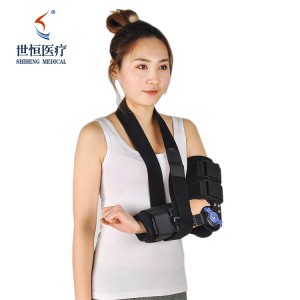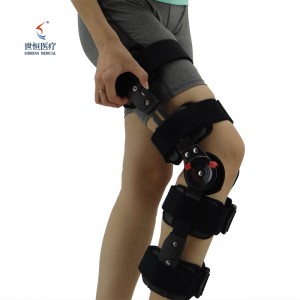A brace is also called an orthosis, which is an appliance that is made to correct the deformities of the limbs and torso or to enhance their supporting ability. The basic functions of orthotics include:
1 Stability and support. Stabilize joints, relieve pain, and restore joint weight-bearing function by restricting abnormal or normal joint activities.
2 Fixation and protection: Fix the diseased limbs or joints to promote healing.
3 Prevent and correct deformities.
4 Reduce weight bearing: It can reduce the long bearing weight of limbs and trunk.
5 Improved functions: It can improve various daily life abilities such as standing, walking, eating, and dressing.
Classification of orthotics:
1 Upper limb orthosis: It is divided into: 1) Static upper limb orthosis, which mainly fixes the limb in the functional position and is used for auxiliary treatment of upper limb fractures, arthritis, tenosynovitis, etc. Such as finger brakes, hand brakes, wrist orthosis, elbow orthosis and shoulder orthosis. Patients with hemophilia can use this type of suitable brace to immobilize the bleeding joints or limbs in the acute bleeding stage to reduce the amount of bleeding and relieve pain. The length of time for wearing this kind of brace depends on the disease. For example, external fixation (cast or splint) after a fracture usually takes about 6 weeks, and the local immobilization time after soft tissue (such as muscle and ligament) injury is generally about 3 weeks. For hemophilia joint bleeding, the immobilization should be lifted after the bleeding stops. Inappropriate and prolonged joint immobilization can lead to decreased joint mobility and even joint contracture, which should be avoided. 2) Movable upper limb orthosis: It is made of springs, rubber and other materials, allowing a certain degree of movement of the limbs, used to correct joints or soft tissue contractures and deformities, and can also protect the joints.

2 Lower limb orthoses: Lower limb orthoses are classified into restrictive and corrective lower limb orthosis according to their structural characteristics and different scope of application. It can also be divided into two categories for neuromuscular diseases and bone and joint dysfunction. At present, it is basically named according to the correction part.
Ankle and foot orthosis: It is the most commonly used lower limb orthosis, mainly used to correct foot drop.
Knee, ankle and foot orthosis: The main function is to stabilize the knee joint, avoid sudden bending of the weak knee joint when bearing weight, and can also correct knee flexion deformities. For hemophilia patients with weak quadriceps muscles, knee, ankle and foot orthoses can be used to stand.
Hip, knee, ankle and foot orthosis: It can selectively control the movement of the hip joint to increase the stability of the pelvis.

Knee orthosis: It is used when there is no need to control the movement of the ankle and foot but only the movement of the knee joint.
Name: Mr.Liu
Mobile:0086-18617909888
Tel:0086-318-7591119
Email:kevin@shiheng-medical.com
Add:Development Zone, Anping County, Hebei